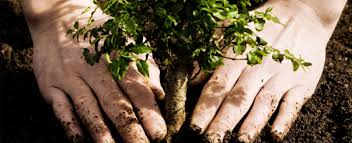Archive for Winter
Winter Gardening: Growing Vegetables
Though snow may lie deep in drifts outside your window, this is the ideal time to get started with this year’s winter gardening program. There are many garden tasks that can be done now, while there is ample time to plan, research, and begin gathering materials. Some gardeners consider these winter chores to be the most enjoyable parts of gardening. Tasks can be accomplished comfortably from your armchair as the garden takes shape in your imagination, where it is always lush, abundant, and of course free of weeds.
Winter Gardening Advice
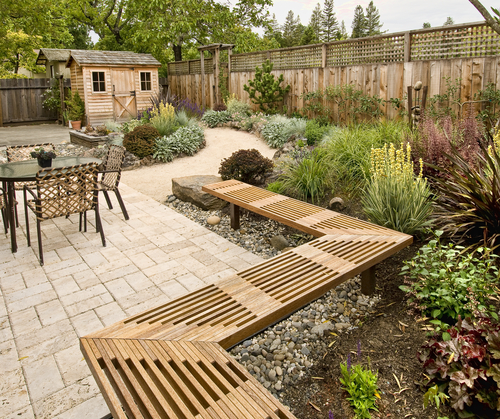
In midwinter, before the growing season gets underway you have time to organize yourself so you can accomplish everything you need to do from now until your garden is planted. This is the time to make rough plans which can be refined and modified as you go along. So while the birds twitter around their feeders and the forecast is for more snow, grab a stack of seed catalogs, some paper, and a pencil, and settle into a comfortable chair and plan your dream garden.
It is helpful at this early stage to make some key decisions about your garden. You need to compile the list of vegetables that you plan to grow. You must also decide which vegetables you will start from seed inside, which you’ll sow as seed directly into your garden, and which you’ll purchase as seedlings from a nursery. Additionally, you should list supplies you’ll need for cowing seedlings indoors, and begin to gather these items. It is also helpful to start composing a rough sketch of your garden layout. Finally, you should draw up a calendar of garden tasks to do to help you stay on schedule as the season progresses.
Start by thinking about which vegetables you’d like to grow this year. If you’ve had a vegetable garden before you should consider what grew well for you before and what failed. Certainly include any of your old favorites, those vegetables that are easy to grow and can be relied upon to produce abundantly. There may be new vegetables you’d like to try or new varieties of your old favorites that you would like to experiment with. Consider quantity too. Did you have as much as you wanted of everything last year? Was there something that you could not give away fast enough such as all those zucchinis? Perhaps there was something which you enjoyed eating but took up too much space?
If you haven’t grown vegetables before, a good way to start putting a list together is simply to consider what your family enjoys eating. You’ll want to think about vegetables that you’d like to provide fresh from your garden over the summer, as well as considering any vegetables that you’d like to can, freeze, or store for fall and winter eating. If this is your first vegetable garden it’s wise to start small. A small kitchen garden of ten or twenty square feet planted with a handful of vegetables and herbs will keep you fairly busy with garden tasks, supplement your family’s food, and provide you with good gardening experience to go forward.
Don’t forget to take your growing zone into consideration when choosing vegetables to grow. If you are not sure which zone you live in, you can readily find out in almost any gardening book or online. Do some research on gardening in your region to find out how long your growing season is, when planting time starts, and what types of vegetables do best where you live. Contact us for more information.
Winter Landscaping – Its Actually Great For Your Lawn
During the latter time of the year, when the winter months begin to creep in, the outdoors transition into a dull and inhospitable place. All the activity then shifts to the indoors, however, for garden and lawn lovers alike, this is the ideal time to prep your lawns and gardens for the upcoming growing season. These are five easy tips you can consider, to keep your gardens and lawns in good shape during winter. Improve your winter landscaping techniques today!
Winter Landscaping Tips
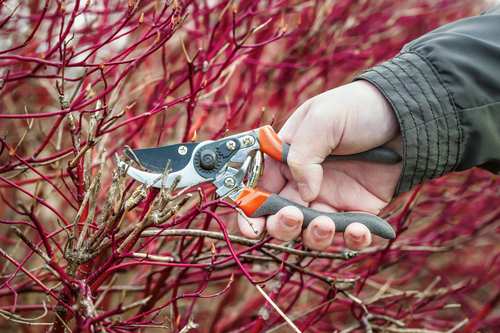
Pruning and trimming is a popular garden practice. This helps to shape, improve and maintain the general health of plants and trees. During the dormant, winter months carrying out these practices, tend to be fairly, popular and is encouraged,as during this time of dormancy, the vast majority of hedges, shrubs and trees, including evergreens and deciduous trees, can be pruned or trimmed, without causing damage to the plant or tree.
Heavy snowfall and high winds, usually come with the seasonal winter storms.Therefore it is recommended, that prior to this time, all high or decayed branches, be pruned or entirely removed. If or when stormy conditions occur, these decayed branches or dead trees can quickly transform into falling hazards, that pose serious threats of injury. With that said, not everyone may be confident enough to carry out pruning or trimming effectively. So we recommend, consulting a local, insured, tree removal service, who will handle all your trimming and pruning needs in a safe, professional and effective manner.
During the fall, leading into winter leaves are constantly falling, covering your garden or lawn from end to end with immense amounts of leaves. Cleaning and maintaining your lawns or gardens at this time, certainly proves to be a daunting task but is also very important. This practice allows your garden beds and lawns, to receive the adequate amounts of sunlight required, for the optimal growth of plants as well as lush healthy lawns.
Another resourceful and efficient tip one can utilize in effort to prep your garden for the upcoming growing season, is getting a head start planting your garden beds. One can begin by pruning all shrubs, trees and perennials.Secondly, clear and remove all leaves and other debris from beds. Afterward, define the edges of beds by hard edging and creating a perimeter pass along the edge, with a lawn mower. Once these steps are completed you can then begin to install your bulbs for spring.
Protecting plants from any damage or destruction, has always been a major concern for most gardeners,with the harsh,winter weather being no exception. A clever tip that has proven effective, to equip gardeners for this extreme period, is the use of mulch. Mulch is used to retain soil moisture, regulate soil temperature, suppress weed growth, serves as an aesthetic and most importantly, acts as a shield against the unfavourable, winter, conditions. Planting beds should be mulched at a depth of 1.5 – 2 inches, to ensure plant roots remain the right temperature as well as to offer the right amount of protection from any potential damage.
Ensuring that you maintain a safe and nurturing environment throughout your garden, should be a priority of every gardener, especially throughout the winter season. This would include tying up loose branches of evergreens and boxwoods,turning off and covering all water spigots, storing away any remaining, organic, chemicals and making sure that irrigation systems are properly winterized. With that said, please remember not to use a broom or shovel while removing snow from branches as they will be frozen, fragile and could easily sustain damage. If in doubt this winter season contact DK Landscaping for more information.
Winter’s For The Birds
While your garden is dormant, it can be just as entertaining and rewarding to feed our feathered friends in winter. Feeding the birds in winter is a kindness not only to them, but also to yourself. After all, there’s nothing quite like watching all of the birds happily feeding each morning while you’re sipping on a hot cup of coffee.
Winter is a particularly a difficult season for birds who stick around colder climates, and is at that time of year when their usual foods are in short supply. Birds use a lot of energy in the winter months to keep themselves warm, they need extra stamina. Winter birds are around, but in order to entice them into our yards, we must provide a little nosh – a little seed, perhaps some suet.
Enrich the Birds’ Diet
Birds need extra fat and protein in the wintertime. Fatty treats like oil sunflower seeds, peanuts, and suet are a tasty way to provide these nutrients. (Change the menu in favor of lighter fare when the spring thaw comes along.)
Hang a Covered Bird Feeder
Use a bird feeder equipped with a roof, to shelter your guests from all but the harshest weather that Mother Nature has in store. Fill it up regularly and remember to remove any seeds that get moldy from wintry damp.
Hang Feeders in Cat-Safe Locations
Place bird feeders in locations that do not also offer hiding places for sneak-attacks by cats and other predators. Think of placing the feeders ten to twelve feet from shrubs or brush piles. This gives the birds some time to react.
Offer Birds both Food and Drink
Birds can become dehydrated in winter even if surrounded by ice and snow. Putting out a pan of water near the feeder on warmer days is a terrific idea.
Save Money and Stock Up on Seed
Bird feeding veterans say it is best to stock up on birdseed in the Fall when many lawn and garden centers are discounting it to make way for winter merchandise. Stored properly, (in cool dry places) seed can easily last for months, particularly seed mixes and sunflower seeds.
Leaving berriesand other fruit on your native trees and bushes. Birds ranging from robins, cardinals, juncos, waxwings and mockingbirds to wild turkey and grouse will feast on these fruits throughout the cold months. And if you’ve been smart enough to leave your fallen leaves on the ground since autumn, the decaying leaf litter will provide a feast of insects, seeds, nuts and other treats for your backyard birds.
Surviving Winter Drought
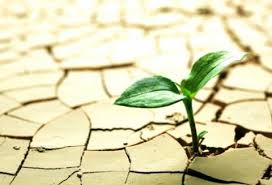
Since our “official” rainy season began October 2013, Sonoma County county has seen only two inches of rain bringing us the driest season that anyone can remember in the North Bay. This has resulted in another difficult growing season for farmers and gardeners. Many cities are already implementing water restrictions and encouraging citizens to voluntarily engage in water conservation.
So what can the home gardener do to use less water, enjoy the garden more, and help the environment? Here are DK Landscapings 10 easy tips:
1) Check for Leaks and Repair– Leaks can occur for many reasons and in many parts of watering systems. Review sites weekly for “weeping” valves, sprinklers, hose bibs, etc.
2) Choose Hand Watering – over automatic irrigation when possible. The more time you spend with the plants, the more they benefit from the attention, the sooner they establish, and the less water they need.
3) Avoid Runoff – To gauge the time to run off, turn on a sprinkler zone and track the time until water runoff begins. That is the amount of run time that should be entered into the controller followed by at least 30 minutes before the next cycle.
4) Inspect and Tune-Up your Sprinkler System Monthly – Adjust your sprinkler heads to prevent water draining off your lawn and down the gutter. Reduce sprinkler run-time, and don’t be a gutter flooder.
5) Get to Know Your Meter – Your water meter is an important conservation tool. It not only measures the amount of water you use, but can also tell you if there is a leak in your plumbing.
6) Incorporate Shrubs and Trees into the garden. Once established, these deep-rooted plants require far less water than shallow-rooted perennials and annuals.
7) Learn Soil/Plant Relationships – Landscape plantings need healthy soil to grow and thrive. The more healthy a plant is, the more stress it can tolerate. Knowing soil type will help with irrigation scheduling. Being able to identify plants will indicate how to best care for the landscape as a whole. In times of drought, reducing fertilizing and pruning can help plants survive with a reduced amount of water.
8) Water – between midnight and 6:00 a.m. to reduce water loss from evaporation and wind. Water your lawn and garden in 2 or 3 short cycles rather than one long one. Watering to a depth of 4″ to 6” will encourage deeper healthier roots and allow the plants to go without water for longer periods of time.
9) Reduce the size of water features (like a pond, stream, or water fountain) to conserve water while still attracting birds and wildlife.
10) Use a Broom, not a hose, to clean your driveway, deck, or patio. Washing a sidewalk or driveway with a hose uses about 50 gallons of water every 5 minutes.
DK Landscaping specializes in water conversation, water efficiency and water management and makes it a priority when serving our clients and our community every season of the year. It is a primary consideration in everything we do, from the selection of plants to the design of irrigation systems and the equipment choices we make.
Every drop matters, and each one of us counts.
Winter Trees
When comparing winter to the lush of spring, summer and fall colors, landscape in the winter can seem subdued. But don’t be too quick to dismiss the garden in the off season. Evergreens are a great and obvious choice to add to your landscape, but what about winter trees? Winter trees offer interesting bark, brightly colored berries, and interesting form and are filled with beautiful secrets of seasons past, as well as seasons to come.
Winter trees can add structure to the landscape and garden and some make excellent hedges and screens whilst others are ideal as statement specimens. From flowering cherries and crab apples to evergreen yews and weeping willows trees offer different leaf size, shape and color. Many have attractive flowers, fruits and seeds and there are those that flower magnificently in spring and those whose leaves offer brilliant autumn color just before leaf fall.
Here are DK Landscaping’s top ten list of trees we recommend planting in the winter.
1. Himalyan Birch (Betula utilis var. jacquemontii)
2. Silver Birch (Betula pendula)
3. Snowy Mespilus (Amerlanchier lamarckii)
4. Christmas berry ‘Red Robin’ (Photinia fraserii ‘Red Robin’)
5. Freeman’s Maple (Acer freemanii ‘Autumn Blaze’)
6. English oak (Quercus robur)
7. Pin oak (Quercus palustris)
8. Crab apple (Malus ‘Evereste’)
9. Crab apple (Malus ‘Rudolph’)
10. Vilmorin’s mountain ash (Sorbus vilmorinii)
By planting trees you can reduce or improve your carbon footprint and generally enhance the environment. Trees can transform an area by introducing welcome shade, protective shelter and wildlife and are an investment for future generations.
All trees require some support and protection such as stakes, tree ties and tree guards. Fertilizer can be added to the planting hole and mulch can be added after planting to preserve moisture and keep down weeds.
Newly planted trees do best when exposed to moderate temperatures and rainfall and they need time to root and acclimatize before the onset of summer heat or the harsher temperatures of winter. Container grown trees can be planted at any time of the year providing the soil / ground is not frozen or water logged.
Winterize Your Landscape
Living in Northern California, we are very fortunate to be able to enjoy warm temperatures usually through the end of November. But as the days get colder, we may feel tempted to curl up under a warm blanket in our living rooms and want to forget about our landscaping. The truth of the matter is, your garden needs some pampering to help it through the cold and stormy months ahead and get it in good shape for next spring. So let’s bundle up, spend some time outside and get your winter checklist out of the way.

Spice up your yard by planting your favorite bulbs now for colorful springtime blooms. The ideal time to do this is before the ground freezes (which can occur anytime in November depending on where you live). You can plant spring-flowering bulbs such as crocuses, daffodils, tulips and hyacinths as soon as possible. While you’re out there planting bulbs, look over your garden and remove dead plant material and cut all flowers and clear debris from the base of roses. Fallen rose foliage can give diseases a safe place to overwinter and create problems in your garden next year.
November is about the time lawns slowly start to recover from the stresses of the hot summer. Lawns should be aerated in the fall and early spring. This process loosens soil compaction and allows water, air and beneficial nutrients to get to the roots. Since grass grows more slowly in fall, it still needs to be cut to prepare for winter. Lowering the height on your lawn mower helps the soil dry out more quickly in spring.
Cut back herbaceous perennials, bushes and shrubs: When shrubs go yellow, their stems bend towards the ground or they start to go to seed, it is time to cut them down. This is because the plants are now drawing their sap back to their roots. If they are not cut down, they may decay.
Give all of your plants a good drink, especially your trees. Their roots need plenty of moisture to make it through the upcoming months.
Protect cold-sensitive plants such as your shrubs, roses, and perennials that might succumb to blasts of cold. You can protect them with mulch or another protective covering. Place these frost barriers after the first freeze.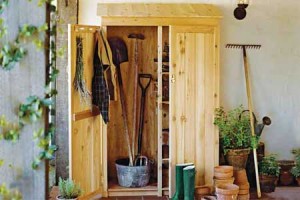
Prepare your garden’s tools for a long winter’s rest: Scrub them clean, sharpen any dull blades and rub everything with oil to prevent rust. Drain water from hoses and sprayers. Drain and store gasoline and oil from power equipment, and disconnect spark plugs. Gather trellises, row covers and other materials you won’t need any more this season. Store everything in a covered spot.
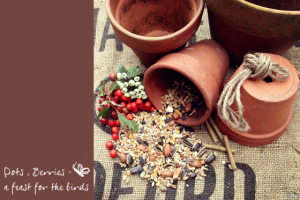 Don’t forget to feed the birds. Our feathered friends food supply grows scarce in the fall and winter months.
Don’t forget to feed the birds. Our feathered friends food supply grows scarce in the fall and winter months.



